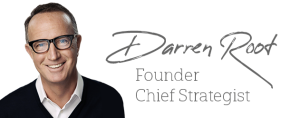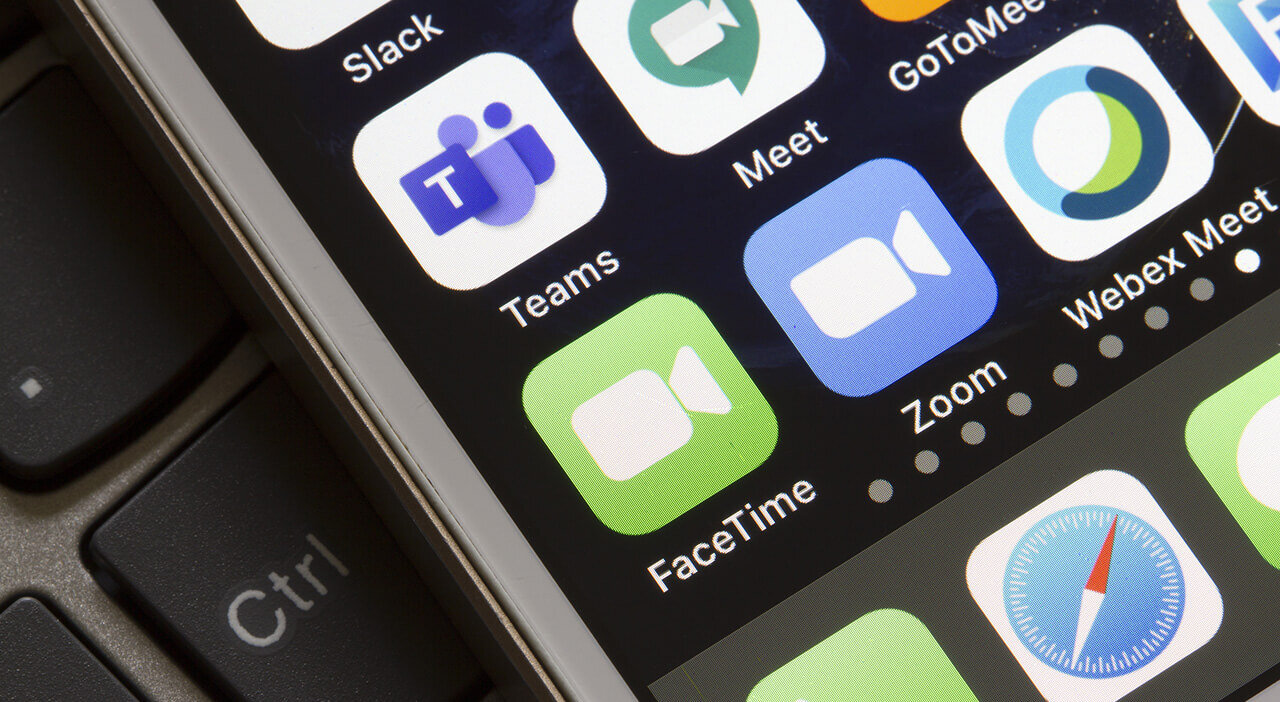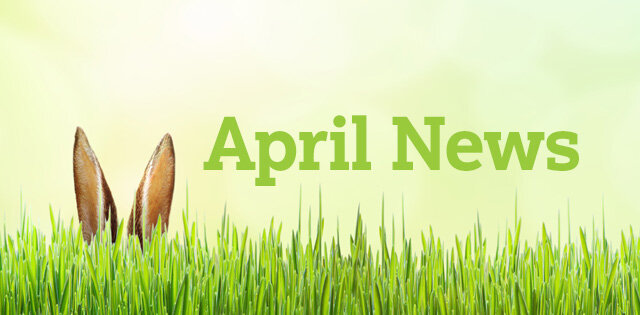Watching for the letters, seeing the seams

I’ve always liked playing tennis. As a teenager I was a pretty solid player, so as an adult who’s worked hard to have more time to enjoy life outside work, I’ve started to play again. I get together with a group of friends, all around my age and good players, so it’s something I look forward to.
However, I’ve noticed that when I play tennis these days, it’s not quite the same. Not because I’m a few decades older, but because my focus has changed. When I play today, I’m not that laser-focused teenager who knows to swing as soon as I see the letters and seams on the ball. Rather, I’m a somewhat distracted older guy whose focus is everywhere but the ball.
These days, it’s really hard for me to watch the letters or the seams because I seem to have lost the ability to focus and to stay present in what I’m doing at the time. I find myself thinking about the phone call I have to make when I get back to the office, or the meeting I need to be ready for, or all the other items on my to-do list—and sometimes I’m not even aware of where my focus is at all. And though I may be able to connect with the ball (well, most of the time), I’m hitting it with little to no intention because I’m in a fog, rather than focused on the moment.
I think as we grow older and our lives become more complicated, we seemingly just slip into that fog. We have to work harder to make ourselves pay attention and for most, unless you notice your tennis game slipping you may not ever realize your loss of intention. It’s not that we can’t pay attention—we’re just so used to moving through our days fueled by auto-pilot and conventional wisdom that we don’t have to pay attention.
Conventional wisdom is a concept that I’ve recently read a lot about; it’s the wisdom of the culture we live in (i.e., success is defined by x,y and z). Sure, it may be easier to go on autopilot and adopt conventional wisdom without having to do the hard work of focusing on the ball—or better yet, the seams on the ball. I’d argue that it’s not just because as you get older, you look back and find that you spent much of your life on autopilot. I’d argue that at this point, you finally realize that it’s just a lot of fog.
Business first, personal later
Unless we have computers for brains, it’s impossible to be a hundred percent present at all times. How can we be, when we’re so overwhelmed with information to digest, people to deal with, tasks to do and places to go? With so much noise, it’s no surprise that we can get overloaded and switch to auto-pilot mode. When this happens, we tend to just deal with what’s in front of us while important and more personal things recede into the background. We know our families will wait for us, but clients may not give us the same leeway.
Earlier, I mentioned being powered by conventional wisdom, which in our era dictates: “Business first, personal later.” We were raised with a strong work ethic, so you worked when you had to—even if it meant missing kids’ school activities and begging off that tennis date. It’s what all successful business owners do. Right?
Not necessarily. If we automatically obey conventional wisdom and don’t think of its effect on the things that are really important to us—if we’re exclusively focused on meeting deadlines and making money—we’re not giving ourselves the opportunity to search for better wisdom, often referred to as “the road less traveled.”
The broad way is the way of most people because it takes little thought; you just do what everyone else does and what our culture expects of us. The narrow way is one with well-thought-out intention.
I had a friend recently confide in me his unhappiness in life. He’s significantly overweight, which bothers him. He doesn’t enjoy his job, but he’s making quite a bit of money. And he doesn’t like where he lives. He’s in the fog and seems stuck.
If you’re wandering through the fog, it’s a good bet that others around you are, as well. In a business, the attitudes of leadership tend to trickle down and create yet another layer of people who figure the old ways of doing business must be the way to go.
Clearing the fog
So, how can you help yourself and your team focus on what’s important? This is one case where it has to start with you. Sit down and really, deeply think about what’s important to you—and start working on your list. Do you want to spend more time with your young children as they grow up? Do you want to continue to grow your firm? Do you want to continue to build the type of clientele that creates a deadline-driven life? Do you want to do the type of work that constantly stresses you out? Do you want to be so exhausted you can’t find an hour a day for a brisk walk?
It doesn’t matter what our culture says about what our priorities should be. Chuck that conventional wisdom out the window. What do you want, and what is your road less traveled?
You don’t have to figure out the rest of your life in one go. I like to examine different aspects of my life and make lists and goals for what’s working and what’s not working well. Ask a few simple questions—for example:
- “Where do I want my health to be in the next 12 months? Lose 15 pounds, walk an hour a day, eat properly?”
- “Where do I want my firm to be in three years? Do I want few deadline driven clients, more recurring revenue, freedom to work from anywhere?”
- “What do I want my relationships to be like with my significant other, my kids, the rest of my family and my co-workers?”
- “What am I willing to do or not do (and what kind of help do I need from my team) so I can make every one of my daughter’s soccer games?”
Encourage everyone in your family and on your team to do the same exercise. The goal is to stay focused enough on all aspects of your life that you can see the seams and maybe even the letters on the ball as it’s coming at you.
Much as I might sometimes wish I was still that teenage boy who could focus on the ball without a bunch of other stuff getting in the way, I’m ultimately glad that I’m not. I’ve learned a lot since that time, and it’s brought me to the place I am today—where I’ve learned what “conventional” wisdom is and I have the confidence to live by my own set of rules. It’s allowed me to build a professional and personal life that I love and to focus on things that I’m truly passionate about.
Best of all, this transformation has given me the opportunity to do one of the things I’m most passionate about: helping other firm leaders find their way out of the fog to make their own lives and businesses better. We’re rising above conventional wisdom together, and it’s hard to think of a more satisfying win than that.


Give your team a lift in the home stretch

We’re entering the home stretch of tax season!
Okay, well…we should be. I don’t need to remind you this isn’t a normal year—honestly, you’re probably sick of hearing it anyway. It’s been a tax season of strategy: Who can we file? Who should we hold? Who might need to be amended? Who might be affected by the next new tax law? The fatigue is real, the stress is at a whole new level and I want you to know that you’re not alone; yours is not the only team feeling this way.
So, how do we beat these feelings? At this point in the season, giving yourself and your staff something to look forward to will help lift the spirits of everyone in the firm—including yourself. Here are a few ideas that are simple and easy to implement right now.
- In prior Thought Leader articles, we mentioned our Tax Season Scorecard. If you haven’t been using it, at this stage I recommend simple planning. As you (owner, partner or staff) go through the motions, make a simple note when you come across something that doesn’t feel right, something you think you can do better or something you think works well. Then when work settles down, revisit your notes and use them to fill out the scorecard to help you plan your goals for the rest of the year.
- Plan a tax season debrief meeting with your team.
- Set a date and time and communicate it to staff and clients (to let clients know the office will be closed during that time).
- Plan a half-day or full-day session.
- Bring in breakfast and/or lunch.
- Give staff the second half of the day or the next day off.
- Even with the deadline extended, plan to give staff time off around April 15. If you’ve already scheduled time off around then, don’t be tempted to move it.
- Encourage your staff (and yourself) to attend any planned family event—and make sure it’s on the calendar.
- Take a few moments to review the event dates that the various organizations you connect with have released for the year. Sign up—and again, put those dates on your calendar. I promise you, it will feel good to have a small thing accomplished and won’t take too much of your time.
- If you’re a Rightworks Academy member, make sure to attend our “Deconstructing Tax Season” staff training on April 21 from 2:00-3:00 p.m. Eastern.
- While you’re signing up for staff training, be sure to check out the details for our brand-new, one-day summer Empower event. Rightworks Academy members can use the link in the “What’s going on” section of this newsletter below.
As you review the above ideas, take a bit of time and give some thought to what works best for your firm. The main takeaway should be to have a few events scheduled on your calendars, to give you something to look forward to. And for the first time this tax season, you’ll be able to say with complete truth, “I know what tomorrow will bring!”


FBI warns on deepfakes

The FBI’s Cyber Division issued a Private Industry Notification (PIN) in March of this year, warning that nefarious actors “…almost certainly will leverage synthetic content for cyber and foreign influence operations in the next 12-18 months.”
Synthetic content can be anything from altered images, to text, to fake news and other media. However, this warning put greater emphasis on the use of deepfakes for manipulation and scams.
If you’re unaware of what a “deepfake” is, check out TheFakening’s YouTube channel for an example. This channel overlays famous people’s faces onto other celebrity videos. Also, if you’re up to speed on the latest TikToks, you may have heard about the Tom Cruise deepfake account that went viral in early March (that’s not Maverick). While their content can be comical, the technology can be quite scary if used with malicious intent.
Imagine this: Your most trusted employee is busy working when they get a Zoom call from what appears to be your account, since it identifies as your name. The employee answers. A video call starts. It looks like you. It sounds like you. The “boss” asks the employee to wire-transfer $20,000 ASAP to a specific account, and provides him with the details. Why wouldn’t the employee trust that he just talked to his boss, and should carry out the request?
Or how about this scenario: a nefarious actor hijacks your account and makes a video call to one of your clients. Again, the client believes she’s communicating with you. “You” ask her to verify her banking information. She complies. The nefarious actor now has access to or knowledge of your client’s banking information, and proceeds to defraud them out of tens of thousands of dollars.
As part of the ongoing security conversations in your firm, you should be discussing these scenarios now, and developing plans to mitigate any risks to your firm and your clients. Here are a couple of easy ideas to get you started:
- Have procedures for making high dollar transactional requests.
- Use a secondary verification process to validate any requests that exceed whatever specific monetary threshold you determine.
- Educate your clients on the threats as well, so you can develop strategies collaboratively.


Balancing online and offline marketing initiatives to crush the competition

We’ve said it before and we’ll say it again: Marketing is a never-ending effort. The race to capture prospect attention while also actively engaging your existing client base requires that firms maintain a sound marketing communications program year round.
The key to fueling brand awareness across your prospect and client bases is to create meaningful experiences that make you stand out. In short, differentiating your firm is more important than ever in the modern business landscape.
Creating balance…
Differentiating your brand requires you to create a balance between online and offline initiatives. While digital tactics are highly effective (and far cheaper to execute than offline/print efforts), too many can create noise and drown out your brand message. This can quickly push your audience into digital overload—the negative side of online marketing.
The fact is that there is still a place for offline/print communications like direct mail, client magazines or newsletters, and other creative collateral. With so much to digest online, receiving this type of helpful, informative content in the mail is often welcomed. How many times have you looked forward to flipping through your favorite retail catalog when it arrives? It’s a relaxing change of pace from on-screen reading.
Creating meaningful interactions is at the heart of differentiating your firm. Sending physical pieces like direct mail, custom gifts and branded swag to your audience creates a more emotional experience than digital outreach—making it a better tool for building relationships.
Planning and executing non-digital campaigns doesn’t have to be an overwhelming task either. You can build scheduled, routine mailings into your current marketing plan that are supported with uniform, predictable processes. Once you’ve integrated a few offline campaigns into your program and define streamlined processes, it will become easier and easier to execute on them.
When it comes to sound marketing strategy, utilizing offline channels has become table stakes. Trust that building authentic relationships with prospects and clients is achievable—even in a cluttered digital landscape. Enabling online-to-offline experiences is one of the ways you can achieve this.
Now, on to a few solid examples…
Mail clients a newsstand-quality magazine bundle
Many Rightworks Academy member firms have been successful in elevating the client experience by offering a printed client magazine. If you have a printed, firm-branded client magazine (like Advantage, In The Loop or other), make good use of it beyond simply laying copies out in your reception area. You can start slow by identifying the top 10 percent of your base and mailing to this group. You can then expand your mailing list as you become more comfortable (and your budget permits).
And don’t just mail the magazine. Place your branded magazine in an oversized branded envelope and include a printed, personalized sticky note on the face of the magazine that might read: “Enjoy our current issue of In The Loop!” On occasion, you can even slip in a gift, such as a small branded item (e.g., pens, paper pads or letter openers) or even a gift card.
Plan follow-up print mailings to augment digital communications
Your top prospects in target niches are most likely the targets for other competing firms as well. Because you’re all trying to reach the same people, you have to stand out from the crowd. Adding an offline touchpoint as follow-up to a digital campaign can push you ahead of competitors.
For example, if you launch a three-part prospect campaign to your dental niche prospect base, at the end of the campaign follow up with a print mailing. This could be an education-based piece, like a short guide that lays out the top KPIs dentists must monitor for success. Or, it could be a Starbucks gift card or branded firm swag. Getting a package delivered represents a positive experience for most, and will get your firm noticed.
Offer an onsite event (once you safely can)
Onsite events like educational, topic-driven lunch-and-learns, open houses or client celebrations can be a big investment, so it’s important to get as much return as possible.
The experience starts with a well-designed and brand-positive invitation. Direct mail can increase response rates by an average of 50 percent, so consider sending both a digital and printed invitation. Also be sure to make use of your social channels to extend awareness and bolster attendance.
Generating ROI on events also means continuing the engagement after someone attends your event. This is where digital communications are ideal—ensuring on-demand message delivery. For example, set up an automated three-part email campaign for attendees and launch it over a three-week period (one email per week). The first email should go out within 24-48 hours of your event. These added touch points will help you continue to build relationships.
Bringing it home…
We most certainly live in a nearly all-digital world, but that doesn’t mean that print is dead. It still has its place in marketing and will continue to be an effective tool for years to come. By balancing your offline and online marketing efforts, you can help clients and prospects avoid digital overload while also helping your firm stand out from the crowd and crush the competition.


The Common Path to Uncommon Success: A Roadmap to Financial Freedom and Fulfillment
by John Lee Dumas
Finding God in the Waves: How I Lost My Faith and Found It Again Through Science
by Mike McHargue and Rob Bell
Think Again: The Power of Knowing What You Don’t Know
by Adam Grant
Your Next Five Moves: Master the Art of Business Strategy
by Patrick Bet-David


What we’re working on
We’ve just released our detailed event agenda for Empower!
Rightworks Academy members: This all-new virtual summer event replaces our usual Firm Retreats. A one-day online format makes it easier and more affordable than ever to get your staff involved and align your entire organization.
Breakout session topics include:
- Modern Firm 101
- The post-COVID conversation
- Technology update: Browser-based tax software review
- The importance of aligning website, content and online presence
- Quantifiable culture
- New product rollout
- Using Business Model Basics
- What’s happening and where are we going
- Having an open mind to change
We hope you’ll join us for Empower on Thursday, May 27, 2021. The event qualifies for up to 3 hours of CPE.
View complete agenda details and register via your Rightworks.com account, under Resources > Events.
Business Model Basics roll-out webinar on April 29
Rightworks has been working on a new tool this spring for our members: Business Model Basics. This tool, based on our 13 Business Model Basics, will serve as a roadmap with defined tasks that firms can follow. Each task is then tied to Rightworks resources. Using Business Model Basics as a guide, firms can craft and follow their plan to improve.
More details will be announced prior to the webinar, but if you’re interested in getting a jump-start on what you’d like to work on to improve your firm, register for the webinar now!
Register via your Rightworks.com account, under Resources > Events > Webinars.
Upcoming webinars
- April 21 – Staff Training: Deconstructing Tax Season
- April 23 – Staff Training: Onvio Tax – Status Update
- April 28 – Staff Training: The next chapter – Succession planning and exit strategy
- April 29 – Business Model Basics Roll-out
Register via your Rightworks.com account, under Resources > Events > Virtual Events.

